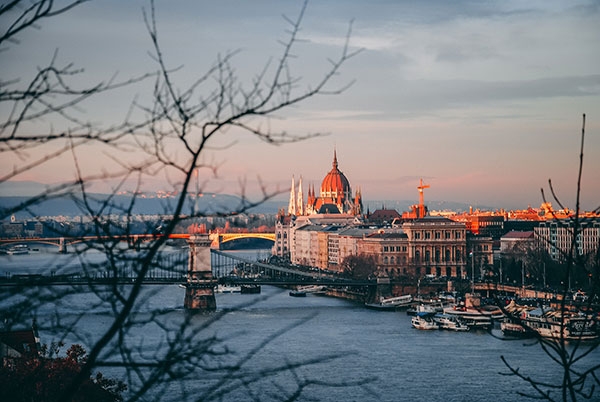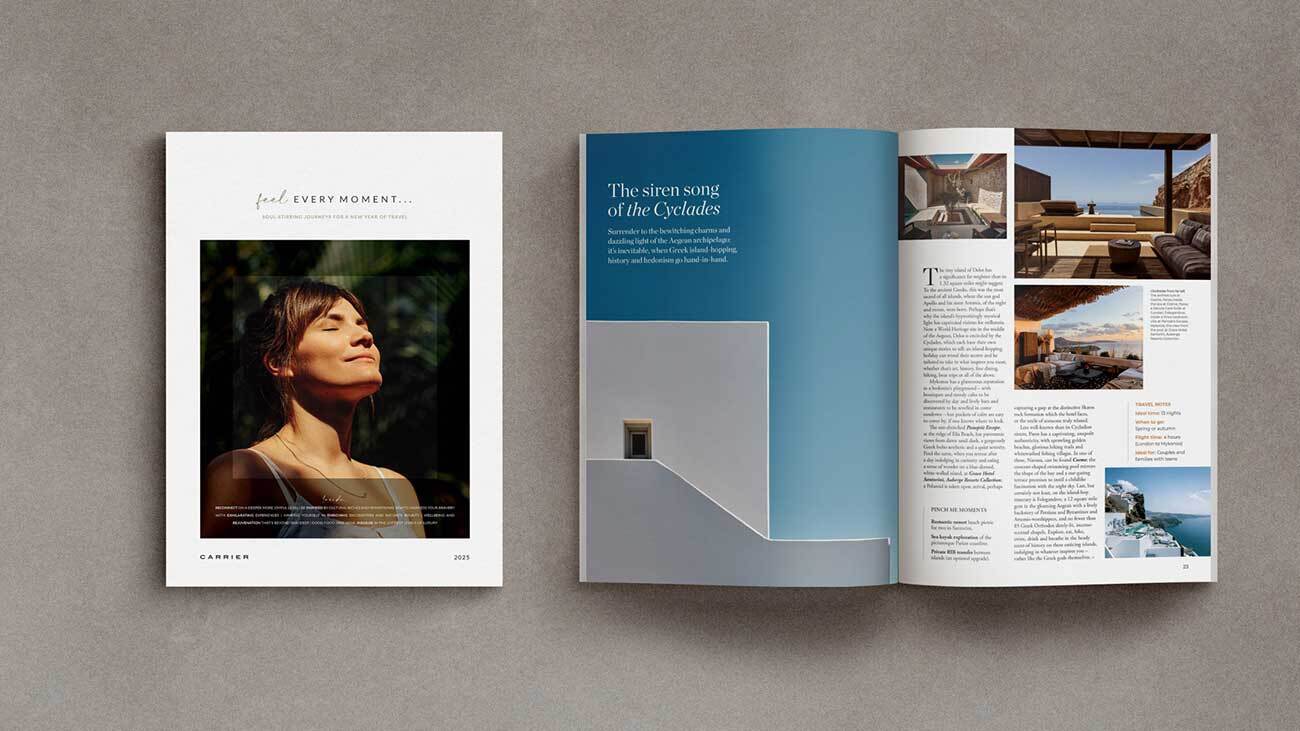City Life: Budapest
A city of many faces. That’s how locals describe Budapest, the charming Hungarian city born from the merging of Buda, Pest and Óbuda (Old Buda) in 1873. It doesn’t take long to discover why. Buda, the mountainous bank on the west side of the Danube, where Buda Castle and Matthias Church reside, is steeped in the history of ancient kings. Across the water, Pest forms the city’s edgier, flatter sibling – a modern metropolis teeming with places to eat, drink and shop..
With such juxtaposing personalities, and Europe’s second-largest river snaking between them, the two halves shouldn’t combine quite as well as they do. But Hungary’s capital draws tourists in their droves – five million in 2018 – and, contrary to popular belief, they’re not all on stag dos. Rather, Budapest’s luxury scene is flourishing, boasting high-end hotels, upscale eateries and trendy bars. Here’s Aspire’s guide to maximising a trip to the City of Spas.
Why sell it
A mere two-and-a-half hours’ flight from London, Budapest shouldn’t be a hard sell to clients who already enjoy making the most of Europe. Packed with historic monuments, varied cuisine and an edgy night scene that would make east London look nervous, the city strikes the perfect balance between the old and the new. As a hotspot for Danube river sailings, Budapest is also a top pre or post-cruise destination and can easily be paired with trips to other gems such as Vienna and Bratislava.
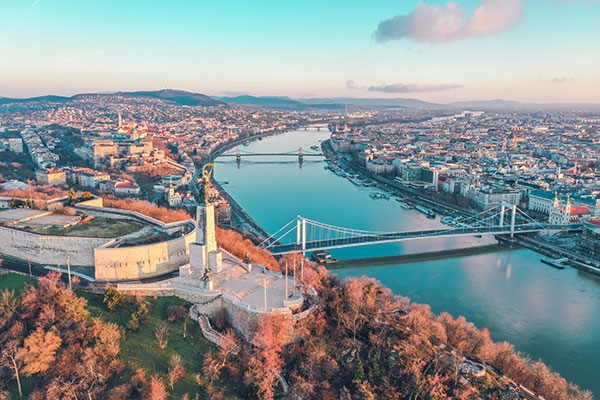

What’s new
As tourist demand for Budapest grows, so too does the map of accommodation, eateries and activities on offer. Central five-star properties Mystery Hotel Budapest and Hyatt’s Parisi Udvar Hotel both opened this year, while W Budapest Hotel, housed in the city’s historic Drechsler Palace that stood abandoned for over a decade on the city’s renowned Andrássy Avenue, is in the works for 2020. Hilton welcomed its third property in the city – the 214-room Hilton Garden Inn Budapest City Centre– last year, alongside other 2018 openings such as adult-only Hotel Clark Budapest at the Buda end of the Széchenyi Chain Bridge. New restaurants are popping up quicker than you can say ‘goulash’, with acclaimed Pest-side restaurants Babel and Stand both receiving Michelin stars this year. Refurbishments are also being made to landmarks such as the Museum of Fine Arts in the iconic Heroes’ Square, which reopened its doors to the public in April following a three-year renovation.
When to go
Budapest is beautiful year-round, but it becomes stiflingly busy in the height of summer. For hardy clients, a visit in January will ensure the smallest of crowds (and the most magical of views) but be warned: the freezing cold will likely make for some teeth-chattering sightseeing. A happy balance can be found during Budapest’s shoulder seasons between the months of March and May and September and November, when the sun finds its way through the clouds and crowds are either emerging or retreating.


Where to stay
Testament to Budapest’s growing popularity, the majority of big-name brands have pitched up in the city, including The Ritz-Carlton, Kempinski, Corinthia and Four Seasons. The latter is located in the restored 1903 Gresham Palace near the Chain Bridge, alongside celebrated modern-European brasserie Kollázs. With white marble floors, intricate wrought-iron gates and antique mosaic tiles, the property’s entrance is a tourist attraction in its own right. Aria Hotel Budapest is another of Budapest’s best and boasts a lively rooftop bar and underground spa. For clients looking for ultimate grandeur, recommend the New York Palace Budapest on the Grand Boulevard – also home to the renowned New York Palace Cafe– or Hotel Moments Budapest, which marries 19th-century architecture with contemporary design.
What to do
Clients who love sightseeing will be in their element in Budapest. The central area of the city along the river is classified as a Unesco World Heritage Site, home to historic monuments such as Buda Castle, Fisherman’s Bastion and Matthias Church, which stand tall over the city on the fairytale-like Castle Hill. Across the river, the Hungarian Parliament Building holds court, designed in impressively intricate neo-Gothic style. This imposing building – and the moving Shoes on the Danube Bank memorial, which honours Jews killed in the Second World War, situated outside – are well worth a tour. Other Pest must sees include St Stephen’s Basilica– named after the first king of Hungary, whose right hand is rumoured to reside inside – and the 150-year-old Dohány Street Synagogue in the Jewish District, the largest in Europe.
For those wishing to scale down the step count, Budapest’s many thermal baths provide opportunity to kick back and relax. Home to around 80 geothermal springs, Budapest was officially named the City of Spas in 1934, though its use of natural thermal water dates back to Roman times. The largest medicinal bath in Europe, Széchenyi Thermal Bathis the most popular spot in the city, so advise clients to head to quieter corners such as 16th-century spa complex Rudas Baths; Gellért Thermal Baths, where you feel as though you’re bathing in a cathedral; or Mandala Day Spanear Margaret Island, where an exclusive new bath section has recently opened featuring stone and marble pools. Additional retail therapy can also be found along Váci Street, home to high-end shops and seasonal markets.
Budapest has a different face after dark so be sure to head down to the river to soak up the starlit views. No trip would be complete without visiting its famous ruin pubs, either. Housed in the ruins of buildings that stood empty and derelict in the wake of the Second World War, these pop-up bars have become lively, ramshackle hubs for drinking and dancing – and a cornerstone of Budapest’s epic nightlife scene. Szimpla Kert (the original), Fogas Ház and Racskert are among the best, but explore the Jewish District on foot and you’re sure to stumble upon others.
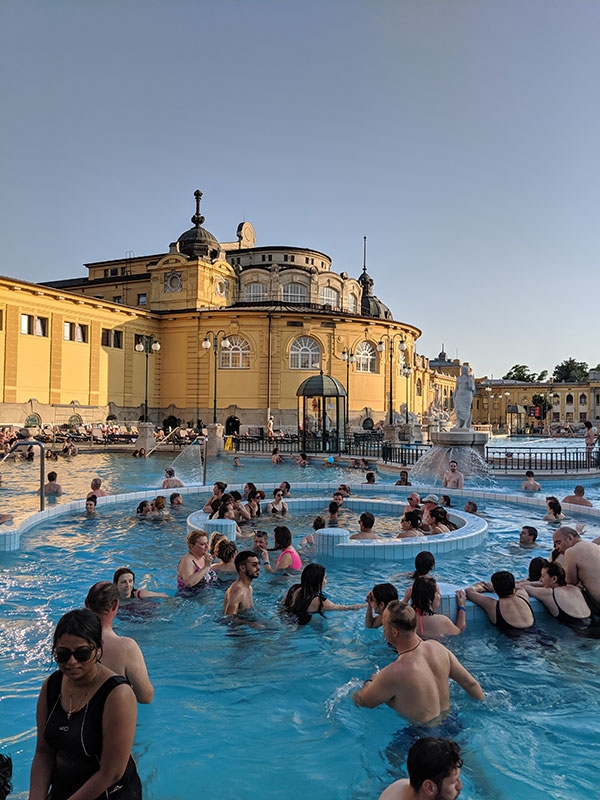
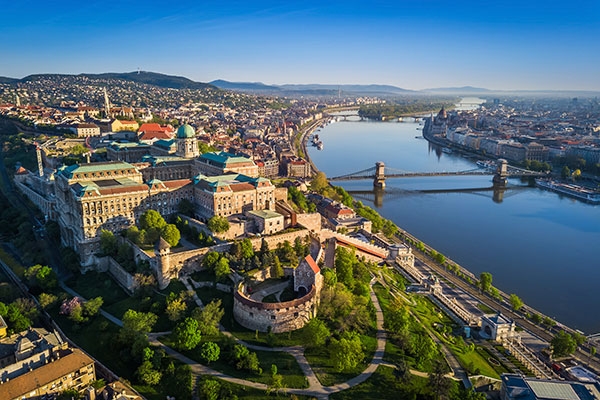
Where to dine
Thanks to a tantalising mixture of Hungarian wine, European influences and a recent surge in Michelin-starred chefs, Budapest is overflowing with cool eateries and fine-dining restaurants. Michelin-starred haunts include Onyx, which sources and celebrates Hungarian produce; open-kitchen-style Costes Downtown; and wine kitchen Borkonyha, which offers more than 200 types of Hungarian wine. Borkonyha’s sister restaurant, Textúra, is also making a name for itself since opening last year. Both venues are located along central Sas Utca by the Basilica.
For gourmet food with an experience, head inside Fisherman’s Bastion to Halászbástya in Buda’s Castle district, for panoramic views of the city; to Spoon, a two-floor moored boat featuring an oriental bar, lounge and restaurant serving high-end fusion food; or to trendy Middle Eastern eatery Mazel Tov (with adjoining ruin pub), where tasty sharing plates and lavish cocktails are de rigueur.
Pair it with
Budapest is a popular cruising destination thanks to its position on the Danube. Avalon Waterways, Tauck, AmaWaterways, Uniworld and Scenic all sail on the river, usually either starting or finishing in the Hungarian capital. From Budapest itself, there are a number of quaint spots to explore, including Margaret Islandor nearby Visegrád, a small castle town about one hour’s drive from the city. There, you can hike up to the historic High Castle and the surrounding Danube-Ipoly National Park or take to the water for a scenic canoe on the Danube Bend.
Take a tour
Cycle tour
A sure-fire way to orientate yourself on day one, this two-wheels tour with Budapest Bike Breeze takes in the seasonal stalls and Budapest Eye of Elizabeth Square, past St Stephen’s Basilica and Liberty Square, before finishing at the Hungarian Parliament Building.
budapestbikebreeze.com
Hiking tour
Trails of Budapest offers daily hiking tours in the mountains above the city, offering a breath of fresh air and a different view of this iconic city.
trailsofbudapest.com
Cave tour
Having explored above the city, why not go under it as well The city sits on a labyrinth of 60 miles of caves that are protected as a Unesco World Heritage Site. A tour of the caves will help visitors understand the wealth of thermal spas above.
caving.hu
